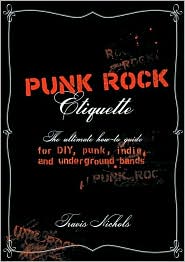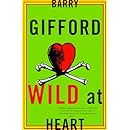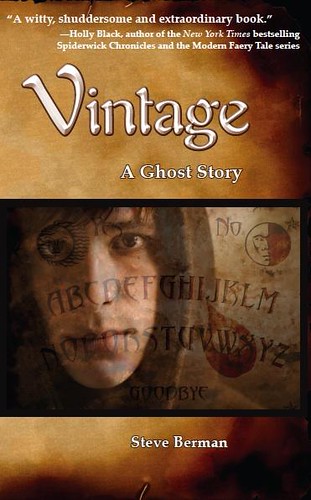
First, I kid you not, Pride and Prejudice and Zombies It features "... the original text of Jane Austen's beloved novel with all-new scenes of bone-crunching zombie action."
If you think Bruce Springsteen is awesome (as any music lover should), check out his bookshelves. (The titles are taken from a shot in the current issue of Rolling Stone.)
Sir David Attenborough has a few thoughts for creationists who send him hate mail as he celebrates Darwin's multiple anniversaries this month:
Telling the magazine that he was asked why he did not give "credit" to God, Attenborough added: "They always mean beautiful things like hummingbirds. I always reply by saying that I think of a little child in east Africa with a worm burrowing through his eyeball. The worm cannot live in any other way, except by burrowing through eyeballs. I find that hard to reconcile with the notion of a divine and benevolent creator."
You can read more about Darwin online in the current issue of Smithsonian and in two articles in National Geographic. (And in my February column which will go online next week at Bookslut.) (And one of the more interesting sounding new books out on this subject that I haven't had a chance to read is Darwin's Garden by Michael Boulter. It's one to keep an eye out for.)
Finally, steampunk fans need to keep their eyes peeled for The Affinity Bridge by George Man. From a recent Tor post: "The book follows the adventures of Maurice Newbury, detective for the Crown, and his assistant, Ms. Veronica Hobbes, a team who sit somewhere between a classic Sherlock Holmes and Watson pairing and that of Doctor Who’s Doctor and one of his more capable companions. They inhabit a wonderfully-realized steampunk London, replete with clockwork butlers, airships in the skies, and zombies in Whitechapel."
It's due from Tor in July.


 So I'm trolling through the "new releases" shelf in the teen department at my library, as I am wont to do, when a small, slim black volume catches my eye. PUNK ROCK Etiquette is the title, and I'm already curious because the words and the fonts, well, they don't really go together well, if you see what I mean. The book is written by Travis Nichols, a cartoonist who posts original comics on
So I'm trolling through the "new releases" shelf in the teen department at my library, as I am wont to do, when a small, slim black volume catches my eye. PUNK ROCK Etiquette is the title, and I'm already curious because the words and the fonts, well, they don't really go together well, if you see what I mean. The book is written by Travis Nichols, a cartoonist who posts original comics on 



 Sometimes life is all about perspective. What we see, what we think, what we feel, depends on how we see, on our unique viewpoint. While this may seem like common knowledge, I’d say the opposite is true. Most people, by far, have no clue how much their unique perspective influences their daily lives and the decisions we make. And far too often people assume how they see and what they see is exactly how and what others see. Philosophically, this extends far beyond just seeing and feeling; our perspectives create our everyday “truths,” our realities. If one hundred people go to a birthday party, do they experience the same party? They may eat the same cake and sing the same song, but could they be experiencing one hundred different versions of the same birthday party? If each of us creates different meaning from a book or a painting, then don’t we do the same when we shop for groceries or watch a ballgame or attend a birthday party?
Sometimes life is all about perspective. What we see, what we think, what we feel, depends on how we see, on our unique viewpoint. While this may seem like common knowledge, I’d say the opposite is true. Most people, by far, have no clue how much their unique perspective influences their daily lives and the decisions we make. And far too often people assume how they see and what they see is exactly how and what others see. Philosophically, this extends far beyond just seeing and feeling; our perspectives create our everyday “truths,” our realities. If one hundred people go to a birthday party, do they experience the same party? They may eat the same cake and sing the same song, but could they be experiencing one hundred different versions of the same birthday party? If each of us creates different meaning from a book or a painting, then don’t we do the same when we shop for groceries or watch a ballgame or attend a birthday party?  Where this finally ends up I’ll leave for you to find out on your own. This is brilliant stuff. And you can find similar work in the sequel, Re-zoom. While neither book tells a story, they have provocative ideas for the reader to think about. Look these books up on Amazon and the editorial reviews target them for up to third and fifth grade. That’s ridiculous; these are marvelous and provocative books for adults, let alone young adults.
Where this finally ends up I’ll leave for you to find out on your own. This is brilliant stuff. And you can find similar work in the sequel, Re-zoom. While neither book tells a story, they have provocative ideas for the reader to think about. Look these books up on Amazon and the editorial reviews target them for up to third and fifth grade. That’s ridiculous; these are marvelous and provocative books for adults, let alone young adults. 
 “Myth is an attempt to narrate a whole human experience, of which the purpose is too deep, going too deep in the blood and soul, for mental explanation or description.” - D. H. Lawrence
“Myth is an attempt to narrate a whole human experience, of which the purpose is too deep, going too deep in the blood and soul, for mental explanation or description.” - D. H. Lawrence




 In November of 2008, Random House released Trillin's follow-up title,
In November of 2008, Random House released Trillin's follow-up title, 







